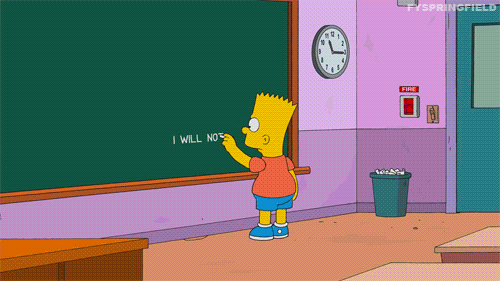PRACTICE 2: Reflective entry 5: Discuss how ethical issues are being addressed while you are taking action
 |
| Technology in the Classroom |
That leads us to the question of what is the digital divide, and does it still exist. The short answer is yes. This is not just about the 'haves and the have not's' but as Normone et al (2018) state it is about the "..knowledge, skills and dispositions of the individuals to use ICT". The 20/20 trust (2014) quote William Michell from MIT as saying “Low-income communities may attract less investment in new telecommunications infrastructure, and in any case may lack populations with the education and motivation to take advantage of it… These places will experience the downside of the digital revolution". This impacts the classroom.
My year 10 class has 4 students whose family do not let them use the computer at home. This means that while they have access to their phones, this platform is not enough for them to be able to usefully connect to the information being presented and often they are not able to effectively use the technology,
Access to digital technologies is varied across our school. Internet New Zealand (n.d) released a study that shows that 80% of us have access to the internet at home but 93% have access when you included a mobile device. This surprised me as it is not what I am experiencing in the classroom. I have also found that a mobile device, while a great starting point, is not able to effectively teach the content and students actually end up getting frustrated and switch off from the learning.
My year 10 class has 4 students whose family do not let them use the computer at home. This means that while they have access to their phones, this platform is not enough for them to be able to usefully connect to the information being presented and often they are not able to effectively use the technology,
Access to digital technologies is varied across our school. Internet New Zealand (n.d) released a study that shows that 80% of us have access to the internet at home but 93% have access when you included a mobile device. This surprised me as it is not what I am experiencing in the classroom. I have also found that a mobile device, while a great starting point, is not able to effectively teach the content and students actually end up getting frustrated and switch off from the learning.
Chromebook, the next step?? Many of our students are now starting highschool having purchased chromebooks or similar at their contributing school. However, there is another section that do not, these devices then become a target for theft and damage from having to transport then around, which renders them not usable and we are back to square one.
The next step is the introduction of chromebooks or similar at a faculty level. We, as a school have tried to cater to this but with 8 overly booked classrooms and only 3 computer trolley's with 15 computers in each, we are still not meeting demands.
The next step, introduce more collaborative tasks, which is what my action plan was based around. However, then comes the problem of what about those students who are sick and can't contribute to their groups work. Is this then an ethical issue itself? Can we use a system similar to what we use here at the mindlab where the students have to decide if everyone has done the same amount of work and deserves the same grade? Then are the students completing work for a grade instead of for the understanding and development of critical thinking? This all comes down to the ethos we develop in our students and what our expectations are.
We are back to looking at RELATIONSHIPS!

The next step is the introduction of chromebooks or similar at a faculty level. We, as a school have tried to cater to this but with 8 overly booked classrooms and only 3 computer trolley's with 15 computers in each, we are still not meeting demands.
The next step, introduce more collaborative tasks, which is what my action plan was based around. However, then comes the problem of what about those students who are sick and can't contribute to their groups work. Is this then an ethical issue itself? Can we use a system similar to what we use here at the mindlab where the students have to decide if everyone has done the same amount of work and deserves the same grade? Then are the students completing work for a grade instead of for the understanding and development of critical thinking? This all comes down to the ethos we develop in our students and what our expectations are.
We are back to looking at RELATIONSHIPS!

Moving forward, the way we set up any inquiry and action plan must involve the students from the start. This is becoming more and more clear throughout this process. Give the students an idea of what you would like to see and keep everyone, including parents, informed through out to make sure everyone's needs and limitations are catered to. When the students feel that the work is being done together and FOR they become engaged in the process and want to learn more. This also, leads to a better understanding and ability to apply it in more than one situation, critical thinking!!!
References:
20/20 Trust, (2014) The Concept of the Digital Divide. Computers in Homes. Retrieved from https://computersinhomes.nz/resources/research/concept-digital-divide/
Internet NZ (N.D) State of the internet 2017. Retrieved from https://internetnz.nz/sites/default/files/SOTI%20FINAL.pdf
Normore, A. H., & Lahera, A. I. (Eds.). (2018). Crossing the Bridge of the Digital Divide: A Walk with Global Leaders. IAP. accessed from https://books.google.co.nz/books?hl=en&lr=&id=wyBzDwAAQBAJ&oi=fnd&pg=PR9&dq=crossing+the+bridge+of+the+digital+divide&ots=foNb4PNU7X&sig=58i5HbYaqHPOqoctWR8p6YKdMxk&redir_esc=y#v=onepage&q=crossing%20the%20bridge%20of%20the%20digital%20divide&f=false
Images:
Technology in the classroom. Retrieved from https://i.pinimg.com/originals/af/3f/ac/af3fac1255bf57b1ce54e00158af57c8.gif
Simpsons Education Retrieved from https://www.google.co.nz/imgres?imgurl=https%3A%2F%2Fcdn-images-1.medium.com%2Fmax%2F1600%2F1*vPrIHrIvfQvPax8UAoOx_g.gif&imgrefurl=https%3A%2F%2Fbrightthemag.com%2Fteaching-teachers-to-play-video-games-1370be64c5a8&docid=10w3kCeYgEVGAM&tbnid=eIeYAP8YWLhGJM%3A&vet=10ahUKEwjD39Hiwq7jAhULYo8KHVFKABEQMwg9KAAwAA..i&w=500&h=281&safe=active&bih=659&biw=1526&q=student%20teacher%20relationships%20and%20critical%20thinking&ved=0ahUKEwjD39Hiwq7jAhULYo8KHVFKABEQMwg9KAAwAA&iact=mrc&uact=8
No comments:
Post a Comment